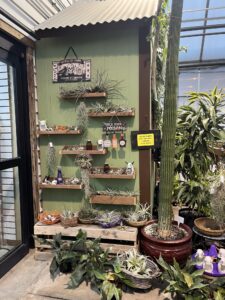
Ecommerce: Lessons from Listening to IGCs
By now, everyone has had conversations about ecommerce with industry leaders, providers or businesses who have implemented an ecommerce solution this past year. I would like to share what I have learned from working with our customers over the past 12 months as they have implemented ecommerce solutions in their businesses.
As local independent garden centers are looking to grow revenue, I believe it will be difficult to match 2020 results without an ecommerce solution in 2021. As we welcome new customers to our industry, we must offer solutions for how they want to shop. There is a growing proportion of consumers that shop online; it’s at a point now where we need to address their shopping habits if we want their business.
Setting Goals and Vision of Ecommerce
Let’s start with the main resonating goals of ecommerce. Ecommerce allows your business to be open 24/7 and your products available for purchase long beyond closing time. By offering consumers the ability to shop anytime they want, many businesses have reduced hours of operation, and some have even reduced the number of days they are open. The other main goal is to attract new consumers and to keep welcoming back the new customers who visited your garden centers in 2020.
To achieve these two goals, there are some major value points to make for a solution that integrates your in-store and online systems — starting with labor. One central system that controls inventory, pricing, and product information means one place to make changes, additions and deletions. There is no need to update your point-of-sale system, then go to another document to update, and then load that into your ecommerce site.
With an integrated solution, there is only one place to make a change and you’re done — thus saving hours of manual data entry labor and helping prevent mistakes between systems. The second value point to integration is it allows businesses to be nimble and react quicker to changes in products. Pricing and inventory are updated in real time, giving your customers a more consistent experience.
Tips for Getting Started
As I have worked with retailers, the discussion always comes to: what should I sell online, and how do I select SKUs for my ecommerce site? Two words should be top of mind: popular and profitable. Within the Epicor Eagle system, we have the ability to double rank inventory with two criteria — highest velocity (most units sold) and most profitable SKUs (we call these our AA items). We score items from AA down to our DD items (SKUs that lack sales and offer low profit).
For ecommerce inventory, I have seen more success with prioritizing the AA items to sell online. We know they are popular, and they have a high profit margin. Alternatively, an interesting tip where we’ve seen some success is taking inventory that hasn’t sold in over 12 months and putting it online, thus expanding the visibility of that product. While it might be a great way to promote inventory that isn’t moving, I strongly suggest careful consideration when restocking these items, and perhaps just being glad when they’re gone.
As your ecommerce site matures, it should be a goal to increase the line items per transaction. I have two suggestions for hitting this goal: use a market basket or product affinity program, or offer kits or bundling products. The market-basket program tells us what products are best at drawing in additional items to the sale. When selling a Supertunia, for example, what are the additional items that are on the same transaction? With this knowledge, you can easily offer suggested items to increase your line item count.
My second suggestion is to offer kits. If you want to sell tomatoes, try offering a tomato plant, soil, pot, fertilizer and cage bundle. This allows the retailer to maximize the potential sale — and is helpful to the customer in providing everything they need quickly and easily.
Determining Your Pickup Options
Consumers today want options for how they shop — in-store, curbside pickup and home delivery all need to be viable choices. Curbside pickup can drive additional revenue and customer loyalty — and the right technology can make it easier. We have seen strong adoption of texting that is integrated within our Epicor retail solution. This will notify the customer when their order has been finalized, making them aware of when they can come and pick up their purchase.
All pickup and delivery options add a certain level of labor to the transaction, with curbside pickup being one of the most sought-after by customers, but labor-intensive for retailers. I have heard from retailers who are testing limiting the timing of these offerings to make better use of labor. For example, curbside pickup may be available Monday through Thursday only. This allows the full staff to be available during the peak times and when they are needed on weekends.
I am also hearing that some businesses are seeing the transaction count level out over the week, so make sure you understand any changes in your consumer shopping behaviors. Additionally, I strongly believe consumers are accustomed to convenience charges. If curbside pickup is important to your customers but a drain on labor, consider adding a shopper fee to cover the cost of business.
Make It Part of the Vision
There are several business processes and vision considerations to make that may guide your ecommerce strategy. The first is to decide if you limit what you sell online or if you want to offer an endless aisle. What I have seen to be successful is keeping it simple and focused on what you do best and promoting the quality of want you have. I’ll repeat here: popular and profitable. It is easier and less labor to keep it simple but focused.
The second is ensuring you have the inventory you are showing online. Segmenting inventory that is available for online purchasing ensures product availability. Avoid the dreaded customer followup to tell them you don’t have in stock what they ordered online. This is especially important on your higher-moving items at risk of selling out.
Third, being nimble requires an integrated solution. As the season changes, so does the inventory and popular products. Businesses need to be able to change the product mix online based on availability and profitability. Keeping the inventory changing keeps the customer coming back.
Lastly, businesses need to find their secret sauce for expanding their shopping options while making sure new costs are covered. Use the right technology to review the new business and customer data while streamlining and optimizing your labor.
I want to thank the many customers who have shared their ecommerce journey with me over the last year. I hope that 2021 will be a profitable year and I’m looking forward to seeing everyone soon in person again.


















 Videos
Videos





